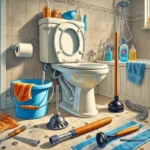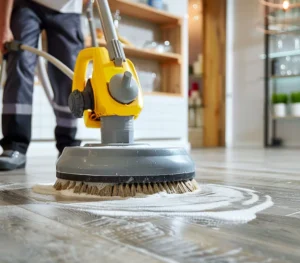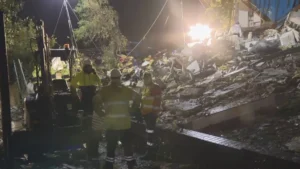White ants, more commonly known as termites, are a major source of concern for Australian homeowners. Given their proclivity to quietly penetrate and cause significant property damage, early detection and effective control rely on understanding what do white ants look like and how they act. This Article will cover the anatomy, differences from other insects, and several types of white ants that may be found in Australia.
Importance of Identifying White Ants
There are several reasons why it is crucial to identify white ants.
Home Safety: Homes badly damaged by termites typically require costly repairs.
Preventive Actions: Early detection can lead to less intrusive and more effective management strategies.
Environmental Effects: Correct identification ensures focused and environmentally friendly treatment.
Anatomy of White Ants
What Do White Ants Look Like
Size and Colour: Usually between 4 and 10 millimetres long, they are comparable in size to black ants. Typically, they have a pale white or cream colour, which gives rise to their nickname. heir heads, though, could be orange or brown. Their bodies are usually softer and plump, not segmented like real ants’.
Body Shape: White ants are softer in shape than other ants. They lack the clear distinction between the thorax, which is the midsection, and the abdomen, which is the rear part of their bodies. These look to be more equally sized and plump.
Head and Antennae: The head and antennae represent yet another distinction. White ants have straight antennae, while ants have elbowed antennae. Furthermore, white ants—especially worker termites—have either no eyes at all or badly formed eyes. Soldier termites, on the other hand, have bigger heads and powerful jaws for defense.
Distinct Features
Organ Structure
Ordinary ants have elbowed antennae, whereas white ants have straight, beaded antennae. These antennas allow them to sense their surroundings and communicate within the colony.
Wing Structure in Reproductives
Alates are reproductive white ants with two sets of equally long wings. During mating season, the fragility and ease with which these wings shed during nuptial flight are important distinguishing features.

Life Stages
Egg
A white ant’s life begins with a small white egg. Usually, worker termites deposit these eggs in clusters within the colony’s nest and tend to them.
Nymph
When the nymphs hatch, they go through a series of moults before becoming adults. During this time, they develop the physical characteristics that distinguish their caste—worker, soldier, or reproductive.
Adult
We divide adult white ants into three major castes:
Workers: Those who forage, keep nests, and care for the young.
Soldiers: The warriors defend the colony from hazards and predators.
Reproductive termites: Including the king, queen, and alates, these are responsible for the colony’s growth and survival.
Types of White Ants
Subterranean White Ants
External Look: Subterranean white ants, which range in color from pale cream to brown, live underground. Warriors and reproductives may appear darker due to their robust skulls and jaws, but workers are typically lighter in colour.
Habitat: Commonly found underground, these termites thrive in moist conditions. They build intricate tunnel networks to access food supplies and maintain the moisture levels required for survival.
Drywood White Ants
- Appearance: Drywood white ants are typically paler in color than subterranean termites. They have shorter legs, antennae, and stronger bodies.
- Habitat: Drywood white ants are so named because they favour dry wood surroundings. They attack furniture, dead tree limbs, and structural timbers, all of which are dry and unharmed. Unlike subterranean termites, they do not require contact with dirt.
Dampwood White Ants
- Appearance: Dampwood white ants are often larger and darker in comparison to their subterranean and drywood siblings. Their larger jaws and skulls give them a more robust build.
- Habitat: Decomposing, moist wood attracts dampwood termites. High humidity, moist wood buildings, and forests are their most common habitats. They can substantially injure moist or failing buildings, but they are less likely to infest dry, well-maintained structures.
Knowing the specific qualities and types of white ants allows homeowners to better detect and handle infestations, potentially preventing damage to their property.
Distribution and Habitat
International Procurement
While white ants, or termites, are found worldwide, their presence is particularly pronounced in Australia due to the favourable warm and moist climate. The distribution of the various species varies; dampwood termites are found near moist woods, drywood termites are concentrated around coastlines, and subterranean termites are distributed throughout the continent.
Preferred Environments
Urban vs Rural Areas
Towns with abundant wood and other cellulose resources attract white ants to their residences. On the other hand, in rural areas, one can find them in agricultural settings, posing a threat to crops and wooden farm structures.
Climate Preferences
Given that white ants love warm, humid climates, much of Australia is an ideal habitat. Higher rainfall and consistent warmer temperatures increase termite activity and variety.
Nest Identification
Nest Locations
- Subterranean termites frequently build underground nests with access to above-ground timber structures.
- Drywood termite-eaten wood, such as furniture or structural lumber, can contain nests.
- Dampwood termites: Typically found in damp woods near water sources like riverbanks or swampy areas.
Nest Structure
Depending on the subsurface species, complex termite nests can either remain completely hidden beneath wood or become visible as mounds. Understanding structural variation can help with both control and early diagnosis.
Behaviour and Lifestyle
Social Structure
Colony Roles
Each colony is highly structured, with the primary divisions being workers, soldiers, and reproductives. Soldiers protect the colony; workers collect food and maintain the nest; and reproductives—kings and queens—are in charge of reproduction.
Queen and King Characteristics
The queen and king are the colony’s beating heart, with the queen capable of laying thousands of eggs per year. The queen’s lifespan, which can last several decades, significantly impacts the colony’s development and survival.
Feeding Habits
Types of Food Sources
White ants primarily consume cellulose, commonly found in wood, paper, and other plant products. This diet is mostly responsible for their status as pests in human households.
Feeding Mechanisms
Termites’ specialised stomach bacteria help break down cellulose into usable energy. Their destructive feeding activity often remains unnoticed until it causes significant harm.
Communication
Pheromone Trails: Termites communicate using chemical signals known as pheromones. These chemical trails alert other colony members to food supplies or signal distress.
Social Interactions: When a colony is attacked or disrupted, tactile and aural signals are used to communicate within it.
Indicators of a white ant infestation
Visual Indicators
Mud Tubes: Subterranean termites build visible mud tubes along walls or foundations to help them navigate. These tubes keep both moisture and predators at bay.
Discarded Wings: Following mating flights, breeding termites lose their wings. If you come across abandoned wings on your property, a new colony is growing nearby.
Structural Damage
Tree Damage Patterns: Often, we find damaged wood hollowed down the grain, with dried mud or soil lining the galleries. This type of damage can render structural timbers extremely unstable.
Materials Impacted: In addition to wood, termites can cause damage to paper items, insulation, filtration systems, and pool liners.
Sound Indicators
White ant sounds: Distressed termites generate a quiet clicking noise inside walls. If you listen carefully, you can hear troops banging their heads against wood to signal danger.
Tools to Detect Sound: Acoustic detectors can identify termite activity inside walls before severe damage occurs.
To protect your property, you must understand the habitat preferences, habits, and common signs of white ant activity. You can prevent these pests from causing significant damage to Australian homes by detecting and acting quickly.
Prevention and Control
Preventative Measures
Home Maintenance Tips
Regular home maintenance is key to preventing white ant infestations:
- Inspect Regularly: Conduct thorough inspections of your home’s foundation, attic, and other vulnerable areas at least once a year.
- Repair Leaks Right Away: Fix leaks as soon as possible, since moisture attracts white ants.
- Seal Entry Points: To prevent access, caulk foundational fractures and spots where utility lines enter the home.
- Maintain a Dry Environment: Dehumidifiers can help discourage white-ant occupancy in wet areas of your home, such as crawl spaces and basements.
Landscaping Considerations
Landscape management can have a significant impact on preventing white ants.
- Distance Wood from Home: Keep your home’s foundation free of firewood and debris.
- Trim Trees and Shrubs: If you leave branches on your property, white ants will have an easy way to reach them.
- Proper Drainage: Ensure that your property is graded properly to prevent water accumulation near the foundation.
Chemical Treatments
Types of Insecticides
You can successfully control white ant populations with a variety of chemical treatments.
- Termiticides: These are applied around your home’s perimeter, are specifically designed to kill or repel termites.
- Bait Systems: Installing insecticide baits on your property attracts and poisons white ants, who then transport the poison back to their nest.
Application Methods
Most chemical treatments require professional application to ensure efficacy and safety.
- Soil Treatment: Applying termiticides to the soil surrounding your home can create a chemical barrier that deters white ants.
- Direct Wood Treatment: We spray termiticides directly into sensitive areas of wooden structures, such as door frames and window sills.
Non-Chemical Treatments
Physical Barriers
Physical barriers are a non-toxic approach to keeping termites out.
- Steel Mesh and Sand Barriers: White ants cannot enter your home through small openings if you use steel mesh and sand barriers.
- Foundation Barriers: These barriers installed during the building process, provide a long-term obstacle against white-ant invasion.
Biological Controls
We can control white ant populations by introducing competitors or natural predators.
- Nematodes: Beneficial nematodes that you can introduce into the soil will naturally infect and kill white ants.
- Fungi: Certain types of fungi are pathogenic to white ants and can be used as a biological control method.
Read also: How to Get Rid of Green Ants Naturally
Myths and Misconceptions
Common Myths
Improper identification
- White Ants vs. Common Ants: Many people mistake white ants for common ants, leading to ineffective control tactics.
- Termites vs. Ants: Despite their common name, termites and ants are a distinct species with their own habits and control needs.
Ineffective Home Remedies
Vinegar and Lemons: Although some individuals believe vinegar or lemon juice would repel white ants, these methods are generally ineffective against large numbers.
Borax: While it kills white ants instantly, it is ineffective in eliminating a colony.
Clarifying Facts
Scientific Explanations
- Colony Behaviour: Successful control requires an understanding of white ant social organisation and conduct.
- Life Cycle: Understanding the many stages of white ants makes it easier to identify and target them.
Effective Control Measures
- Integrated Pest Management: Chemical, physical, and biological treatments are most effective for managing white ant infestations.
- Expert Assistance: To ensure comprehensive treatment, significant infestations frequently necessitate the services of a pest control professional.
FAQs
Q: What attracts white ants to my home?
A: Moisture- and cellulose-rich materials, such as wood, attract white ants the most. These bugs can enter your home via leaks, poor drainage, and wooden structures that come into contact with the ground.
Q: How can I identify the difference between ordinary and white ants?
A: When white ants reproduce, they have straight, beaded antennae and equal-length wings, whereas ordinary ants have elbowed antennas and varied-length wings.
Q: Are humans at risk from white ants?
A: Even if white ants do not directly harm people, their ability to severely damage structures can lead to costly repairs and unsafe living conditions.
Q: How can we effectively eradicate white ants?
A: Combining chemical treatments, preventative measures, and professional pest control services can most effectively exterminate white ants and protect your property.
Q: How frequently should I look for white ants in my house?
A: Examinations should be performed at least once a year to detect early signs of infestation and treat them before they cause significant damage.
Final Thought
White ants pose a severe threat to homes and other buildings around Australia. We must control and avoid infestations through early detection, accurate identification, and effective management approaches. Homeowners can proactively defend their houses by understanding the anatomy, behaviour, and several types of white ants. Routine inspections, preventative maintenance, and expert treatments are all essential components of an effective white ant management plan.






